Hanoi Overview
Hanoi is the capital as well as an important center of politic, culture, and tourism of Vietnam. Hanoi is also the oldest capital city and in October 2010, it will celebrate the 1000th years of Thang Long.
Hanoi sits on both sides of the Red River, about 1760 km away from Ho Chi Minh city. Hanoi is located in the Red River Delta of the Northern Region, and borders with Thai Nguyen province, Vinh Phuc province in the North; Ha Nam and Hoa Binh province in the South; Bac Giang, Bac Ninh and Hung Yen province in the East; Phu Tho and Hoa Binh provinces in the West.
Hanoi has a long history and many cultural works of architecture as well as famous historical sites. Hanoi is the hottest attraction of international tourists in Vietnam thanks to its ancient, thoughtful and elegant look and the hidden beauty of this thousand-year-old civilization city.
What To Do And What To See in Hanoi?
Before you take any of Vietnam Tours you may think about Hanoi because it may be the place you fly into for starting your trip. Hanoi lends herself to leisurely exploration with full of things to see, from a delicious mix of East and West.
Hoan Kiem Lake (Sword Lake)
In the past time, the local people called it Ta Vong Lake. Legend has it that the Dragon King (Long Vuong) gave a magic sword for Le Loi - an excellent Emperor of Vietnam to battle the Ming army in 1428. Thanks to the support of this sword, Le Loi and his army won the enemy and bring peaceful sphere for their country back. Once, Emperor Le Loi and his courtier were wandering around Ta Vong Lake, a Turtle God surfaced and asked him for the magic sword. From this event, Ta Vong Lake is renamed Hoan Kiem Lake.

At the center of Sword Lake is the Turtle Tower and particularly, there is The Huc Bridge, a wooden red - painted bridge in connection with Ngoc Son Temple which was built from the 13th century.
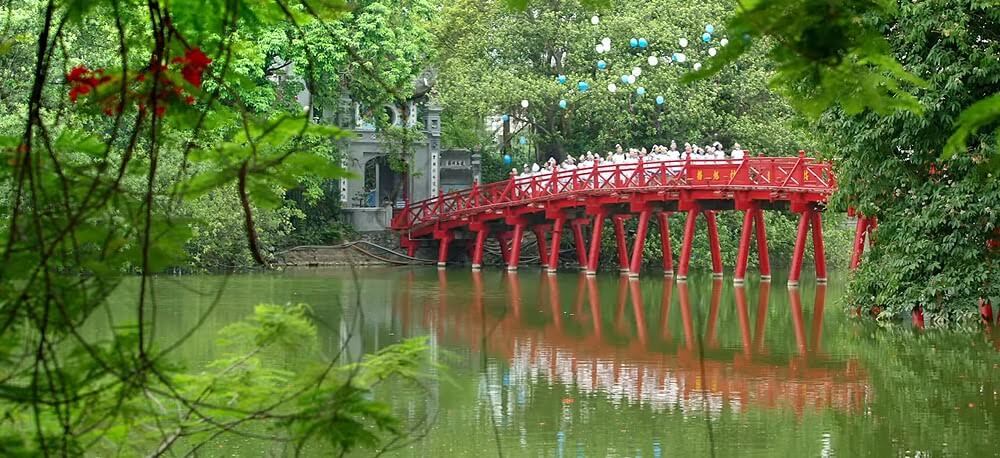
Hanoi Old Quater
Inside a modern and dynamic city, there appears an antique quarter, Hanoi Old Quarter – the represented eternal soul of the city. These days, most Vietnamese and Westerners are familiar with the phrase "Hanoi - 36 districts" or “Hanoi – 36 Old Streets” the top special historical vestige and sight-seeing of the capital, luring international visitors thanks to their most original state.

Temple of Literature
It is the first university of Vietnamese which had been dated from 1970-1976 under Ly’s dynasty. At first, this temple was used to be honor Confucian, but later it became a desirable place that doctor’s name during the feudal period was curved in the turtlebacks. All parts of the temple still remain the ancient architecture of Ly’s dynasty with mainly wooden materials. Many antiquities of the past time are displayed such as daily objects of students, noble’s clothes, ceramic things.
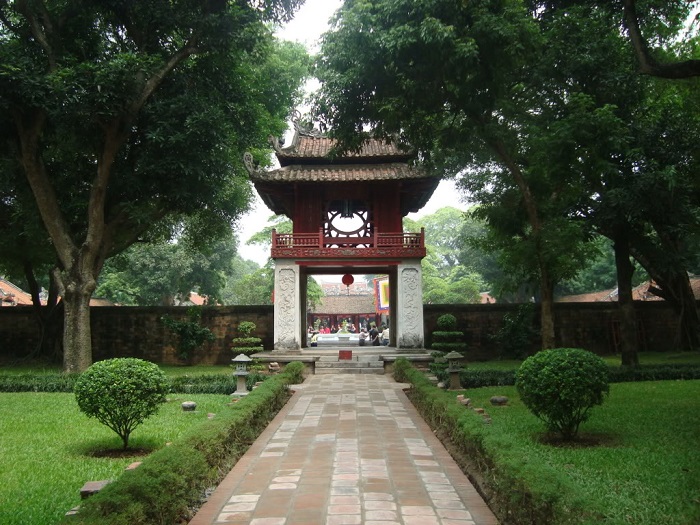
It is clearly seen that the Temple of Literature is not only a naturally historical site but also reflect the national spirit about studying culture a thousand years ago. Visitors just take 10 minutes to go from Guom Lake to this place.
One Pillar Pagoda
It is one of the famous landmarks of Hanoi because of its legendary story and its unique structure. One Pillar Pagoda was derived from night dream of King Ly Thai Tong in the 11th century. He saw the Holy Lady (Phat Ba Quan Am) appear and lead him to go inside a lotus. Every his courtier consider that it is a bad thing but his monk asked him for building a pagoda. After that, this king constructed a lotus-shaped pagoda which is exactly the lotus in his dream before.
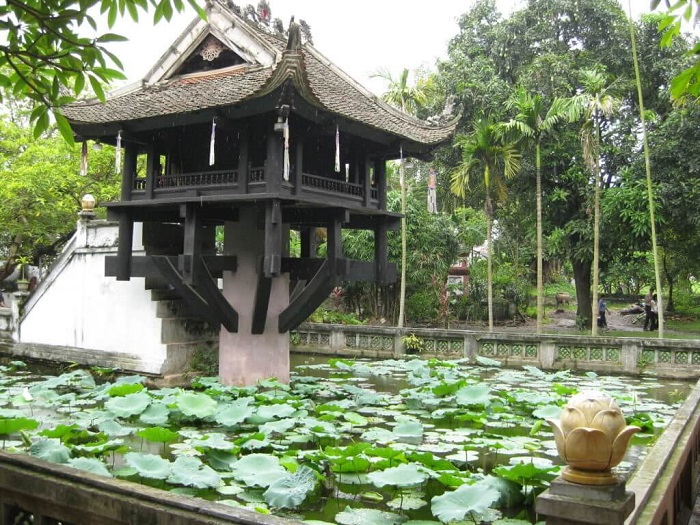
One Pillar Pagoda was finished in 1049 and then, King Ly Nhan Tong added Linh Chieu bond around this pagoda.
Ho Chi Minh Mausoleum
Ho Chi Minh Mausoleum was built from 1973 to 1975. It is a famous tourist attraction of Hanoi to honor President Ho Chi Minh, the national hero of Vietnam who sacrificed his own life for Vietnam independence and reunification. All materials of the mausoleum are donated by Vietnamese people to express the gratitude and respect to Ho Uncle. Outside the mausoleum, there are hundreds of national flowers and bonsais which is precious gifts of all regions of Vietnam.
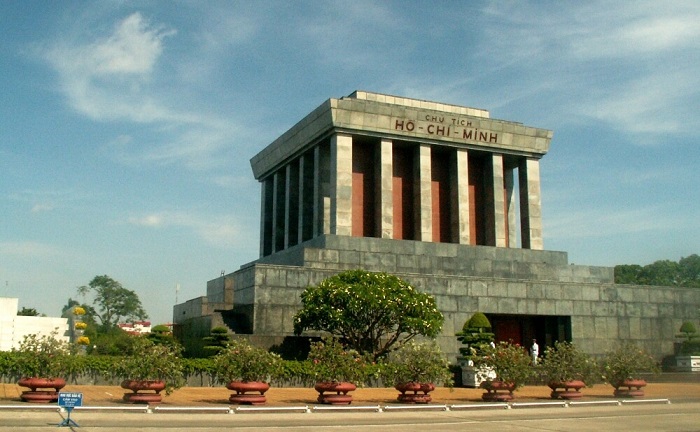
Besides, Ho Chi Minh Mausoleum is considered as a lively memorable picture about a simple lifestyle and pure moral of Ho Chi Minh. Wandering around the mausoleum garden, travelers can visit the fish bond where Ho Uncle often came and fed for fish every morning. Or you can visit Ho’s still next to the garden of trees to enjoy both his working and resting place. This place really creates a perfect harmony between nature and human.
Hoa Lo Prison
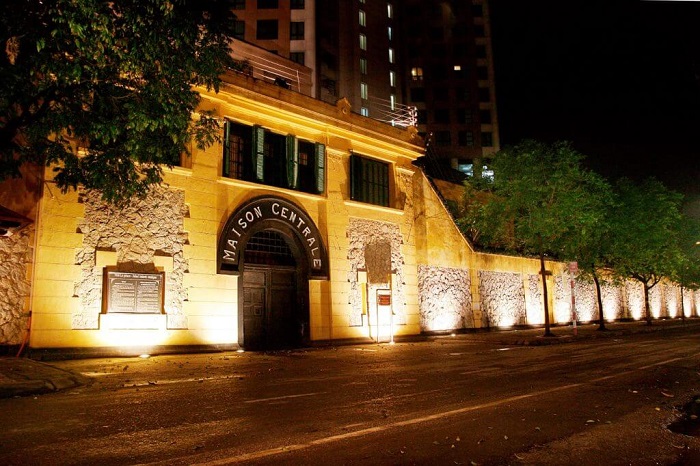
According to CNN, Hoa Lo Prison is on Top 5 cruelest prisons in Southeast Asia. In the period of French colonialist, thousands of Communist soldiers were sentenced and tortured brutally in this site. Hoa Lo Prison is a historical marker which reflects the most lively pictures about both extremely harsh life of Communist prisoners and the viciously tortured tools of the French Army at that time.
Long Bien Bridge
It is a symbol of architecture, history, and culture of Vietnamese for a long time ago. Designed by Gustave Eiffel - a French architecture, Long Bien Bridge was built during 1989-1982 to serve for the first colonial exploitation of France in Vietnam. This bridge is made of steel with 1650 meters in length which became the largest bridge in Indo-Chinese at that time.

This bridge crosses over the Red River that French used it as the main path of transporting materials from Vietnam to China. After that, it turned into a traveling attraction because it has an overwhelmingly magnificent beauty. In the past time, Long Bien Bridge is a favorite destination of French to wander. Nowadays, Vietnamese often visit the Long Bien Bridge because of its historical values but also its incredible landscapes. It is really an ideal site to take photos, especially in the morning and in the afternoon.
Apart from the noisy life in Hanoi, Long Bien Bridge always gives visitors a feeling of peace and experience because of its impressive beauty of nature around Red River, lively daily activities of local people and mouthwatering street foods.
Bat Trang Pottery Village
Located at Gia Lam district of Hanoi capital, Bat Trang became a cradle of pottery art in the period of Vietnamese feudalism. It is only 10 km to go from the center of Hanoi to Bat Trang. This place created a famous ceramic trademark by supplying high-quality ceramic products for both daily objects and decorations for Vietnam people such as the bowl, cup, plate,…
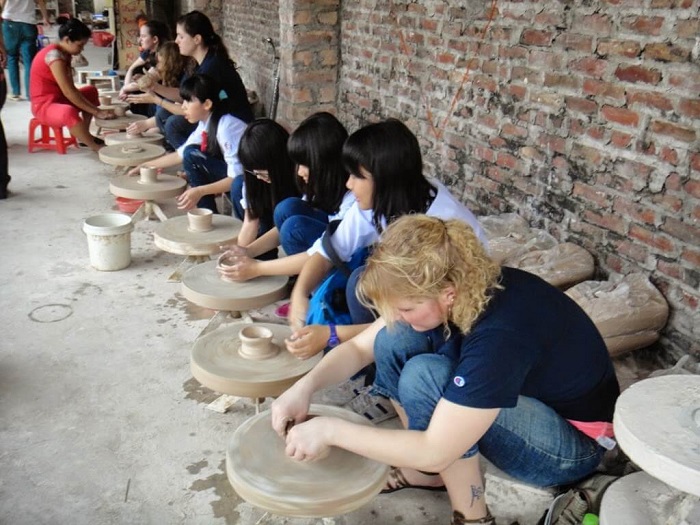
Every ceramic product is painted with special pictures which reflect deeply Vietnamese culture during the past centuries. Visitors can enjoy with Bat Trang artists for making pottery products by themselves or buying ceramic products to present for their relatives.
Van Phuc Silk Village

Van Phuc Silk Village is an excellent place where you can buy a number of silk goods. There are a number of specialty shops present in the village that offer silk clothes. The quality of the goods at this destination is very amazing. There are numerous locations in Hanoi that offer silk goods, but Van Phuc Silk Village is famous among the locals as well as tourists. The market area in this village consists of several vendors who also deal with craft items. Pottery goods can be accessed in Van Phuc Silk Village quite easily. You can plan a trip to this place in order to admire the traditional genius of Hanoi.
Imperial Citadel of Thang Long

Imperial Citadel of Thang Long is an intriguing relic of Vietnam’s history and, signifying its historical and cultural importance, is now a UNESCO World Heritage Site. Standing 40 meters high, the central flag tower is the most recognizable feature of the Imperial Citadel and is often used as a symbol of Hanoi. This was the center of ancient Hanoi and served as the political center for eight centuries. Located in Ba Dinh, the Imperial Citadel of Thang Long is close to many other tourist attractions.
Water Puppet Theatre
The ancient art form of water puppetry has a long association with Hanoi and there are several theatres where guests can enjoy this uniquely Vietnamese take on Asia’s puppet tradition. The original – and widely regarded as the best – theatre in town is Thang Long Puppet Theatre. Puppets dance and glide elegantly over the liquid stage, controlled by a whole troupe of puppet masters hiding behind a screen. Most shows also feature the famous Legend of the Restored Sword of King Le which tells the tale of Hoan Kiem Lake and the giant tortoise.

Perfume Pagoda
Perfume Pagoda is a dramatic temple complex believed to have been first built in the 15th century. This series of Buddhist temples are built into a mountain range in a maze of alleyways carved into the rock with rich forests and flowing streams all around. Located around 60km South of Hanoi in the Son Mountains the journey here is an experience in itself: first, you must take the two-hours journey by car or bus before traveling by boat to the foot of the mountain.

Tran Quoc Pagoda
Tran Quoc Pagoda is located at the Southeastern shore of West Lake. The pagoda here is the oldest Buddhist temple in Hanoi so for tourists, it is a must visit spot. On the grounds here, there is a Bodhi tree under which Buddha sat and sought enlightenment which has become a tourist place.

Dong Xuan Market

Dong Xuan Market is the largest of its kind in Hanoi. Housed within a four-story Soviet-style building, this sprawling complex offers an extensive collection of fashion, apparel, and souvenirs at some of the best prices in the city. Even if you’re not interested in printed T-shirts or cheap sunglasses, it is still fascinating to see the comings and goings of the local traders, and there is a wet market on the ground floor where the sights and smells of exotic produce assault the senses.
Hanoi Opera House
Hanoi Opera House, set in the heart of the French Quarter, is arguably one of the most elegant buildings in all of Hanoi. Built-in 1911 and modeled after the Paris Opera House, this historical landmark exudes Parisian charm from its ivory-toned columns, ornate balustrades, and Gothic domes. Visitors can enjoy classical performances ranging from Vietnamese opera and dance performances to sketches and music concerts by world-renowned artists.

What to eat and drink in Hanoi?
One thing you should not miss in Asia’s most graceful and exotic capital city is a wide range of exquisite local dishes, which brings Vietnamese cuisine to the world’s cuisine map. Hanoi Nightlife may bring you the best experience for what to eat in Hanoi.
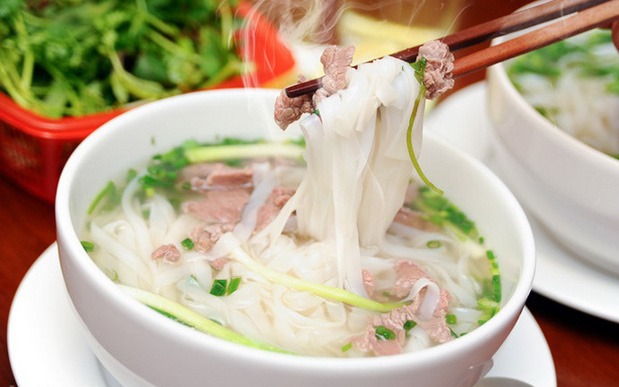
If you come to Hanoi, don’t ever forget tasting Pho (noodles with beef or chicken), Bun Cha (noodles with grilled pork meat) which steal the tongue of former President Barack Obama, Cha Ca La Vong (La Vong fried fish), and many other delicious dishes you should discover by yourselves.
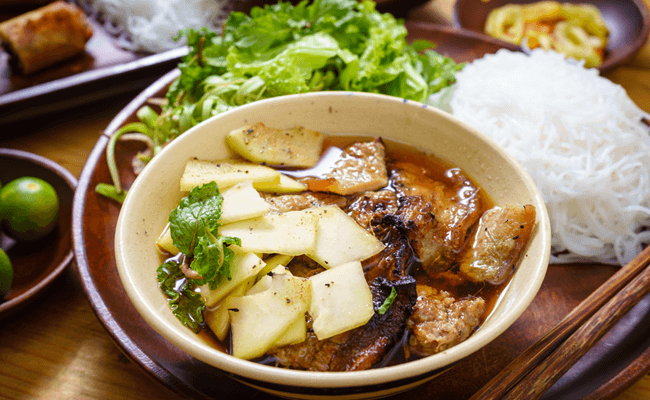
When to visit Hanoi?
Like other places in the Northern hemisphere, Hanoi, with a typical tropical climate, has chilly winter, when the temperatures can significantly drop into 10 degrees Celsius and the steaming summers when it is an uncomfortably hot and humid affair with the temperatures consistently above 20 degrees Celsius. In spite of the unpredictability of the weather in Hanoi, this over-1000-year-old city can be visited at any time of a year.
Winter is the time to enjoy the fascinating festival in Vietnam: Tet holiday – Vietnamese New Year’s Celebration, to discover all the sights on foot; summer is when to go for a beer or coffee without dripping with sweat; spring and autumn for cooler weather, for the most pleasant weather of a year, for the charm of Hanoi in its fullest.